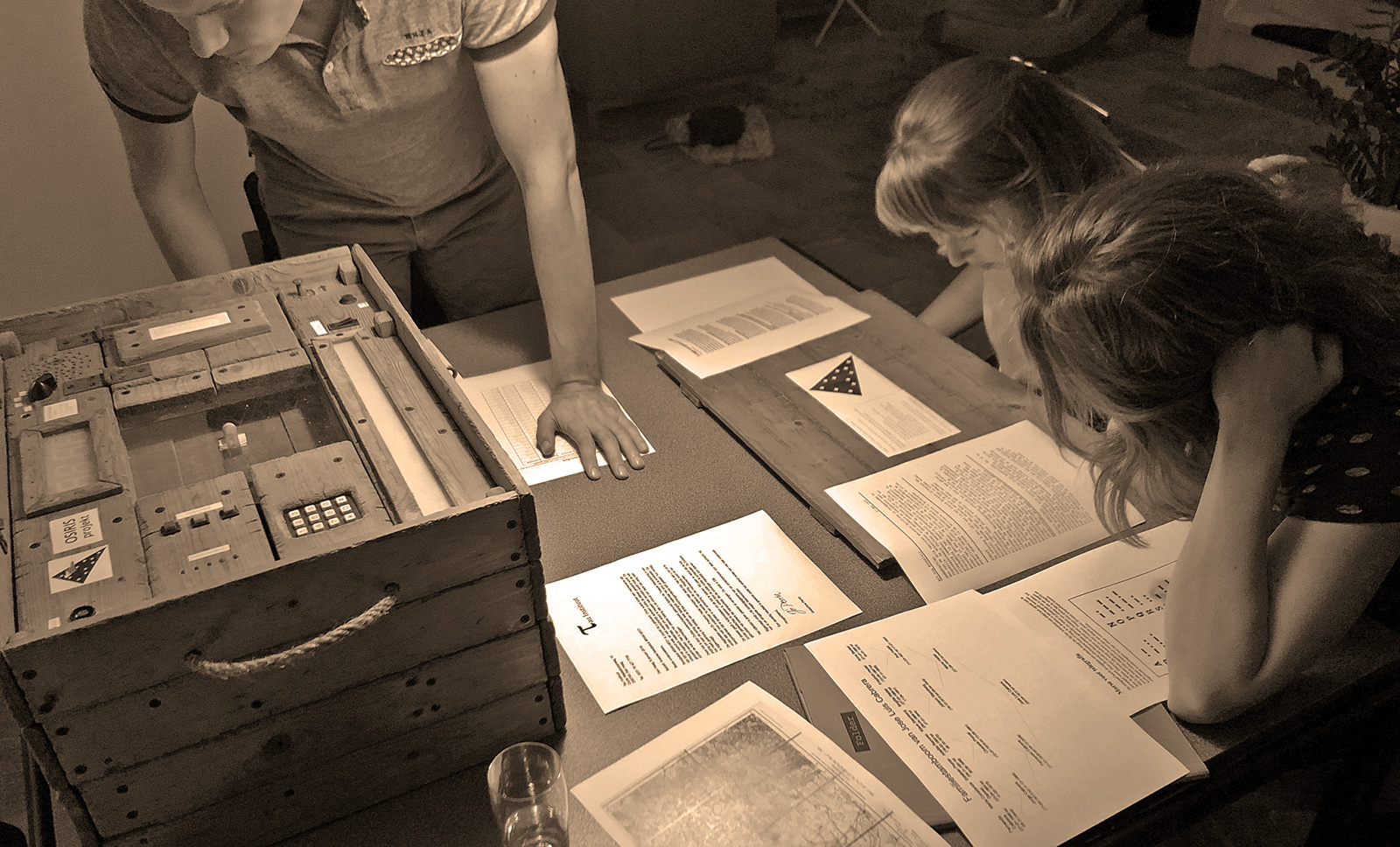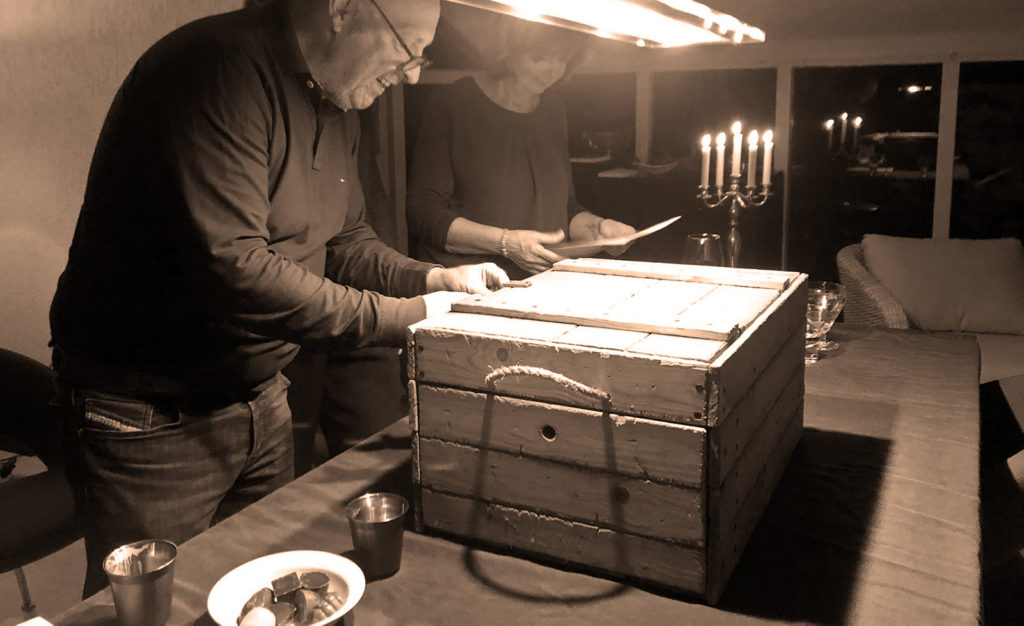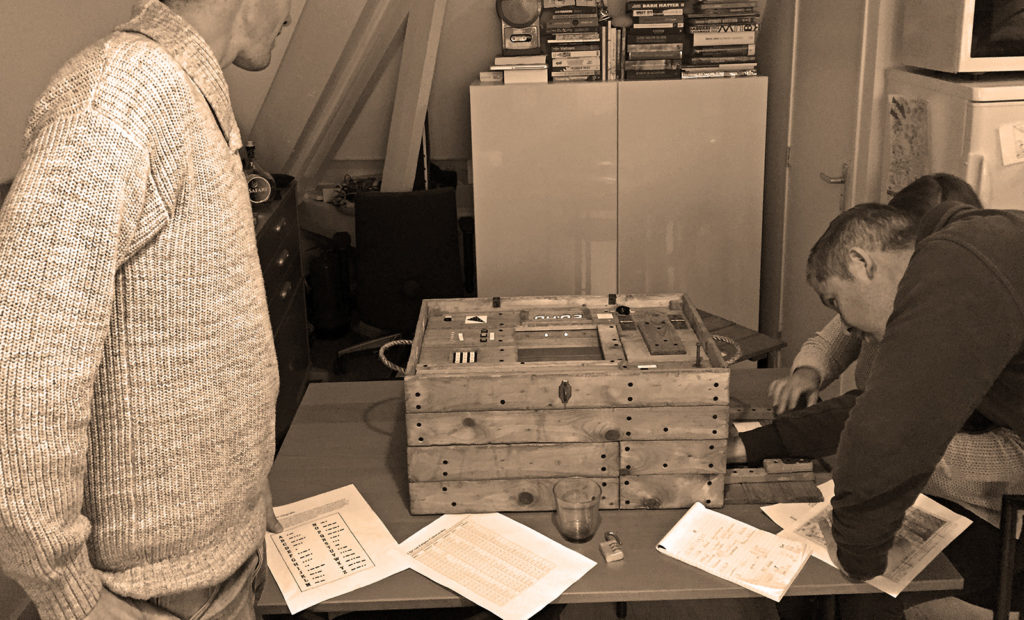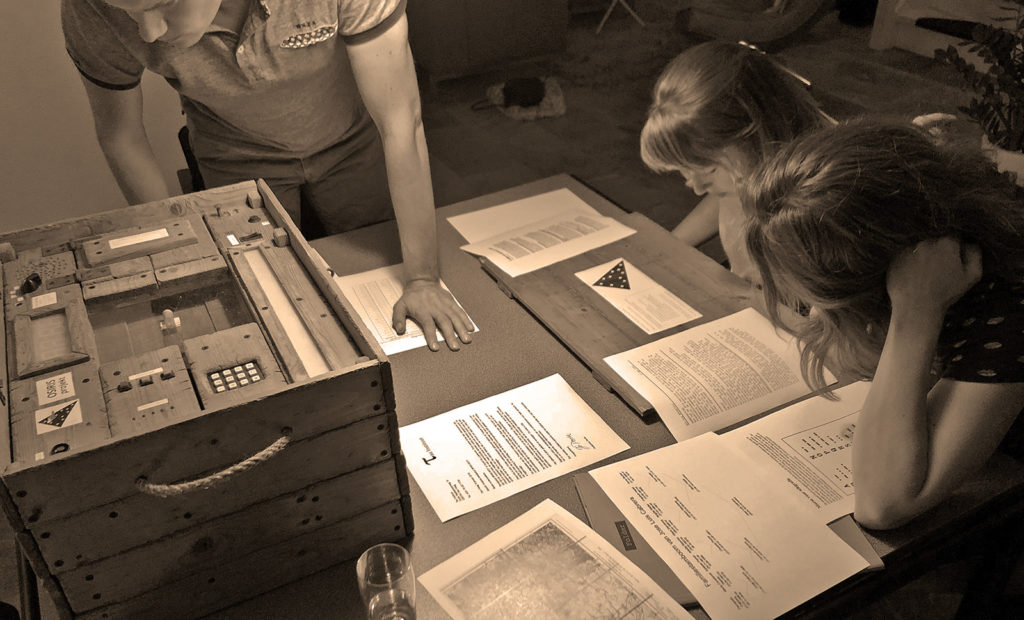
The Escape Box: an escape room in a box
27-8-2018

Over the course of 2018, I co-developed the escape box – essentially, an escape room-like game, but in a box. Like an escape room, the box builds on a compelling plot and requires 3-4 players to cooperate in order to reach an end goal – the revealing of the final secret held by the box.
An escape box is also highly constrained its ability to immerse players in a storyline. We view our escape box as only a single piece of a larger puzzle. Even before starting to deal with the box’s puzzles, players are lured into the story, going as far as to become virtual member of a very mysterious agency.
On the game side, we built on experience playing various escape rooms over the years. That is, we minimized anything suspectible to brute force, and attempt to structure the puzzles in such a way that players are guided from one puzzle to the next, yet don’t feel like they are. There is a quite clever hint system in the box as well, which neatly fits in with the story line.
The biggest challenge in designing a compelling, enjoyable game is to get the difficulty just right. We tested with groups of varying sized and compositions to find common issues, get a feel for the attention span and perceived difficulty of the various puzzles, and tweaked the storyline and game mechanics accordingly.
How it’s made
Compared to an escape room, an escape box is very constrained in terms of what is technically feasible. We wanted to have a strong storyline, and found that it was an absolute requirement to keep the integrity of the box as much as possible (e.g. players should really be convinced this is an actual box from the 1940’s era), but that of course limits our technical options: we can’t ask players to plug into a wall socket before playing, for instance (not to think of what should happen when players unplug the thing). Nevertheless we required a way for the box to power on after being shipped (not having to open it). In the end we opted to run the box off a very beefy 5V battery pack. The system is controlled by a Raspberry Pi 3+ (a Pi Zero is considered for a future version as the processing power of the Pi 3 is a bit overkill, but that would require special audio circuitry – also, the Pi 3 is capable of acting as a Wi-Fi access point, which is really helpful when debugging).
The box’s games are primarily controlled by MCP23017 GPIO extender chips, hanging off a single I2C bus. The MCP23017 is very versatile, each chip providing up to 16 configurable in-or-output ports at 5V, 20mA (with a cap on the total per-chip current). Two WS2801 RGB LED light strips power various visual elements as well, and are controlled over two SPI buses. Finally there are several servos, whose signals are driven directly from the RPi using soft PWM. While we are now using hand-etched PCBs in the current version, future revisions will use custom designed, professionally etched ones. The software is built on NodeJS and uses a reactive structure, which allows for easy componentization while allowing for intricate interworking between puzzles and mechanisms.
Read more (Dutch): www.escape-kist.nl.




